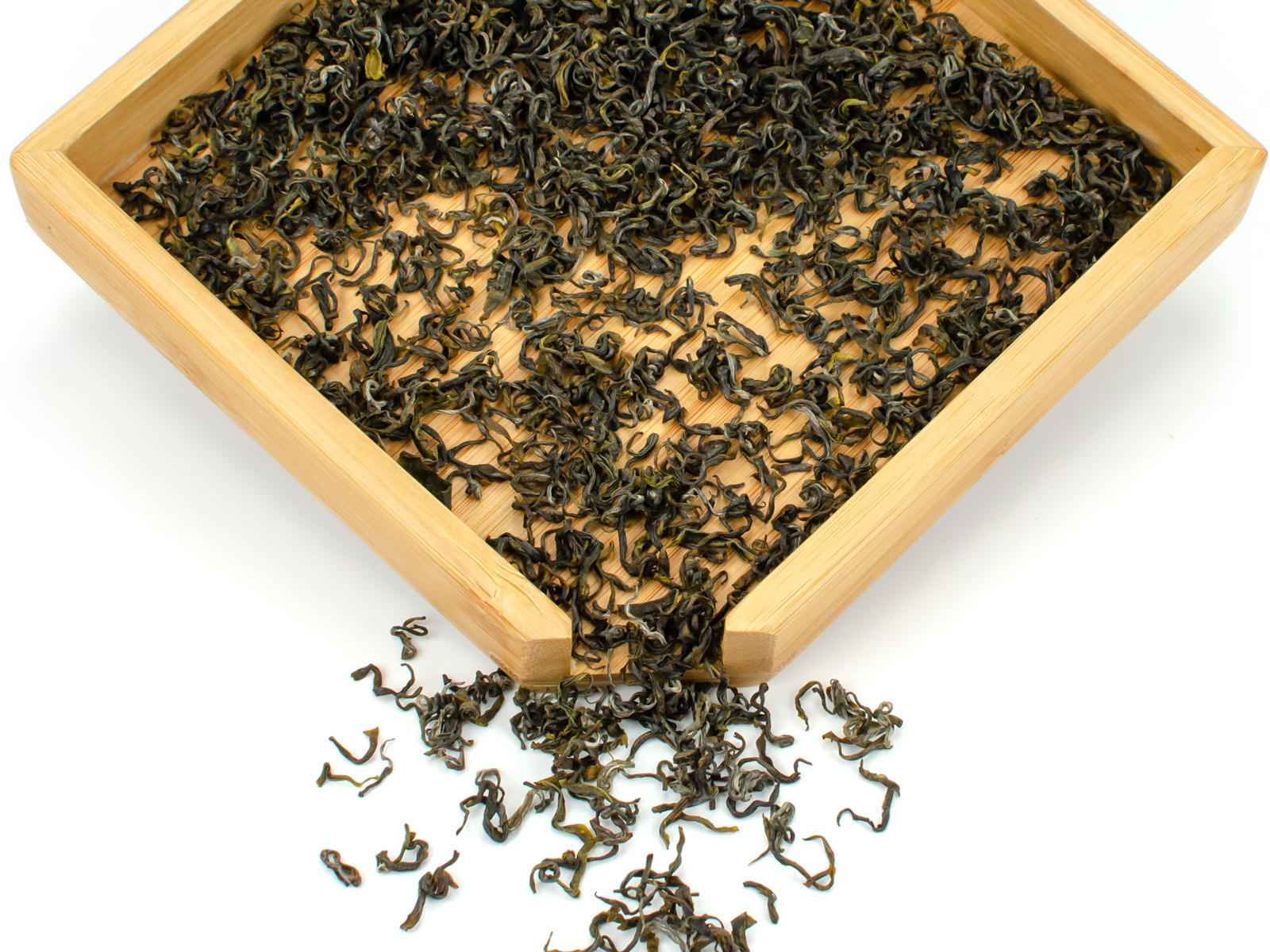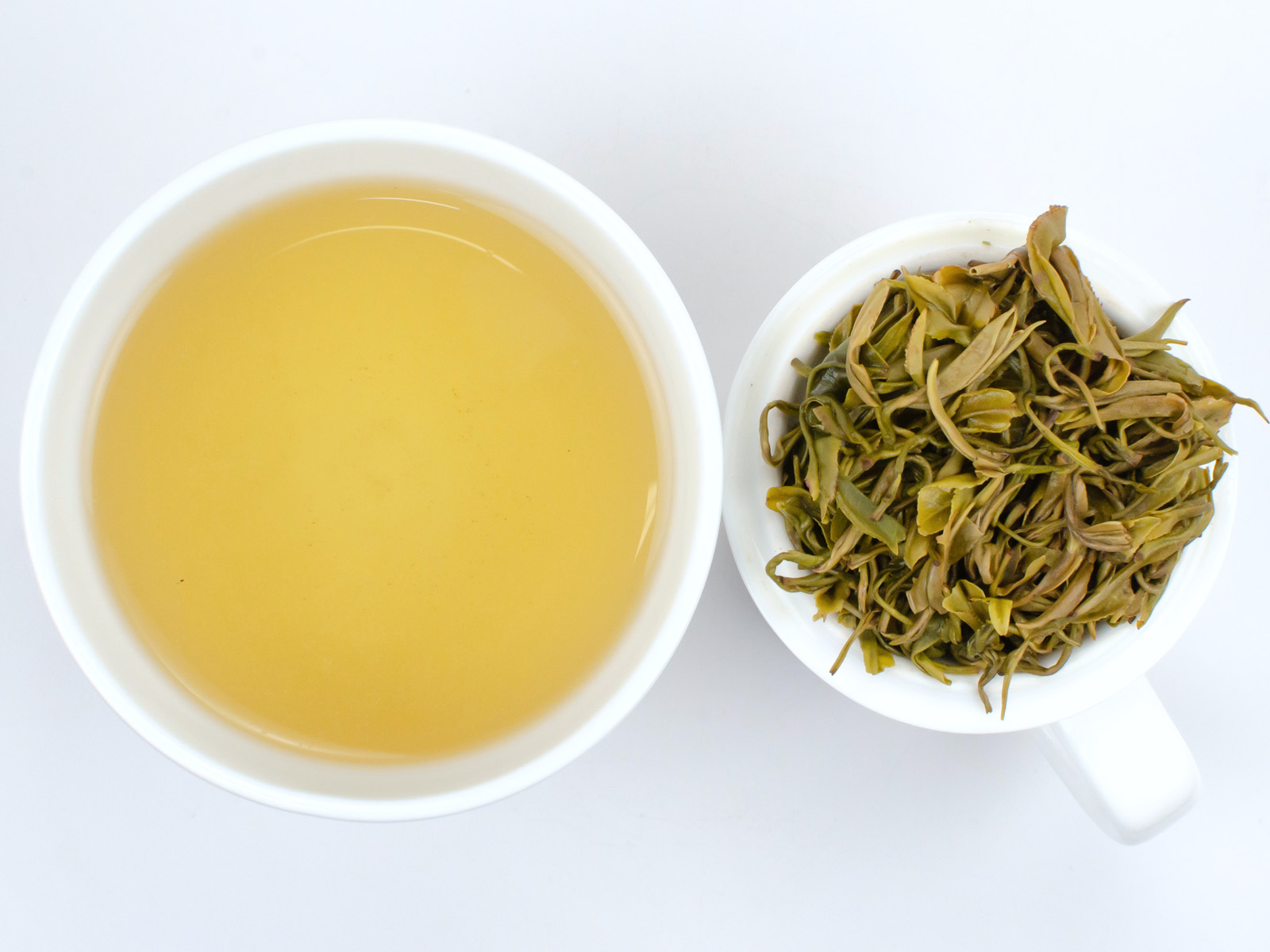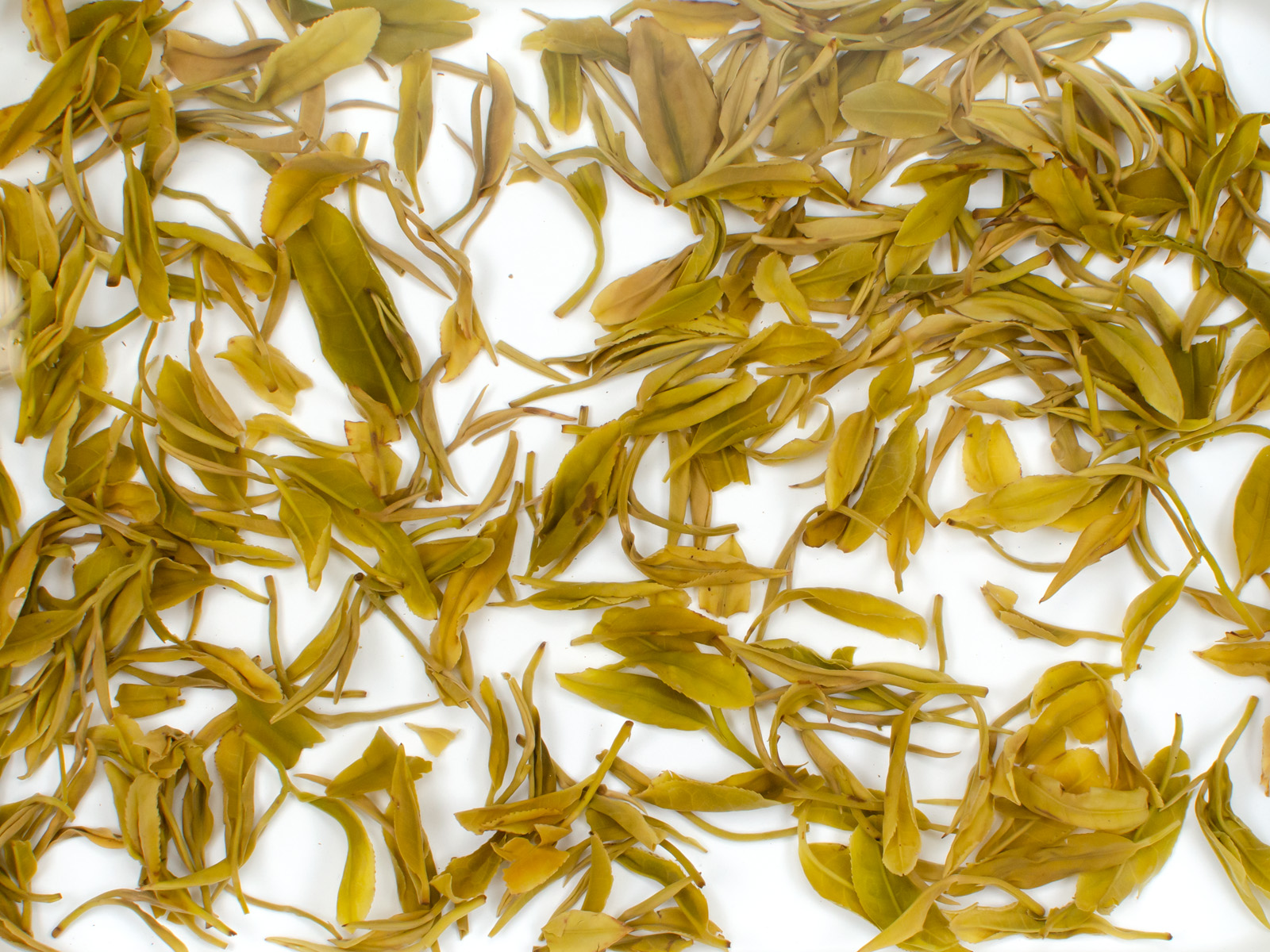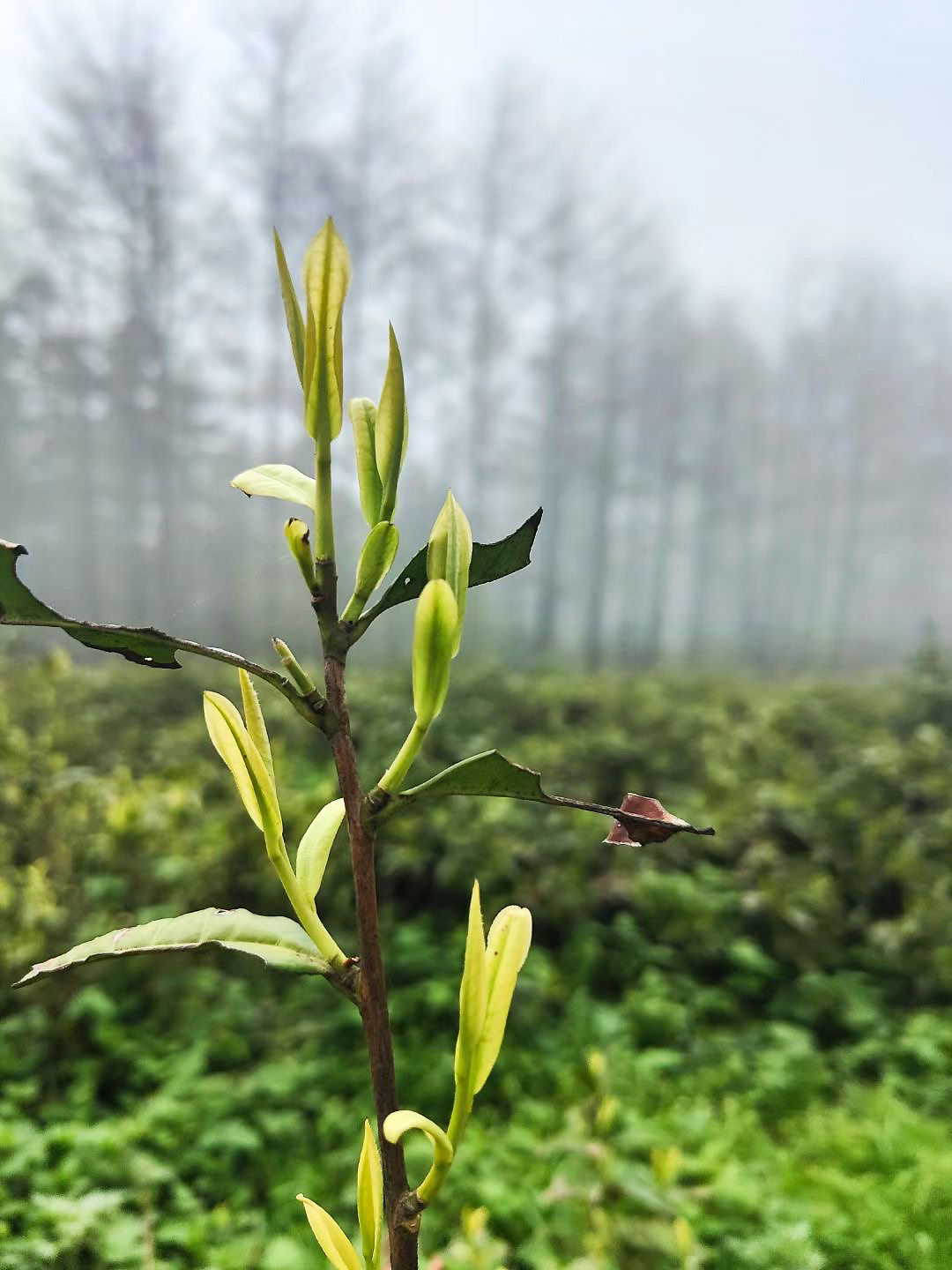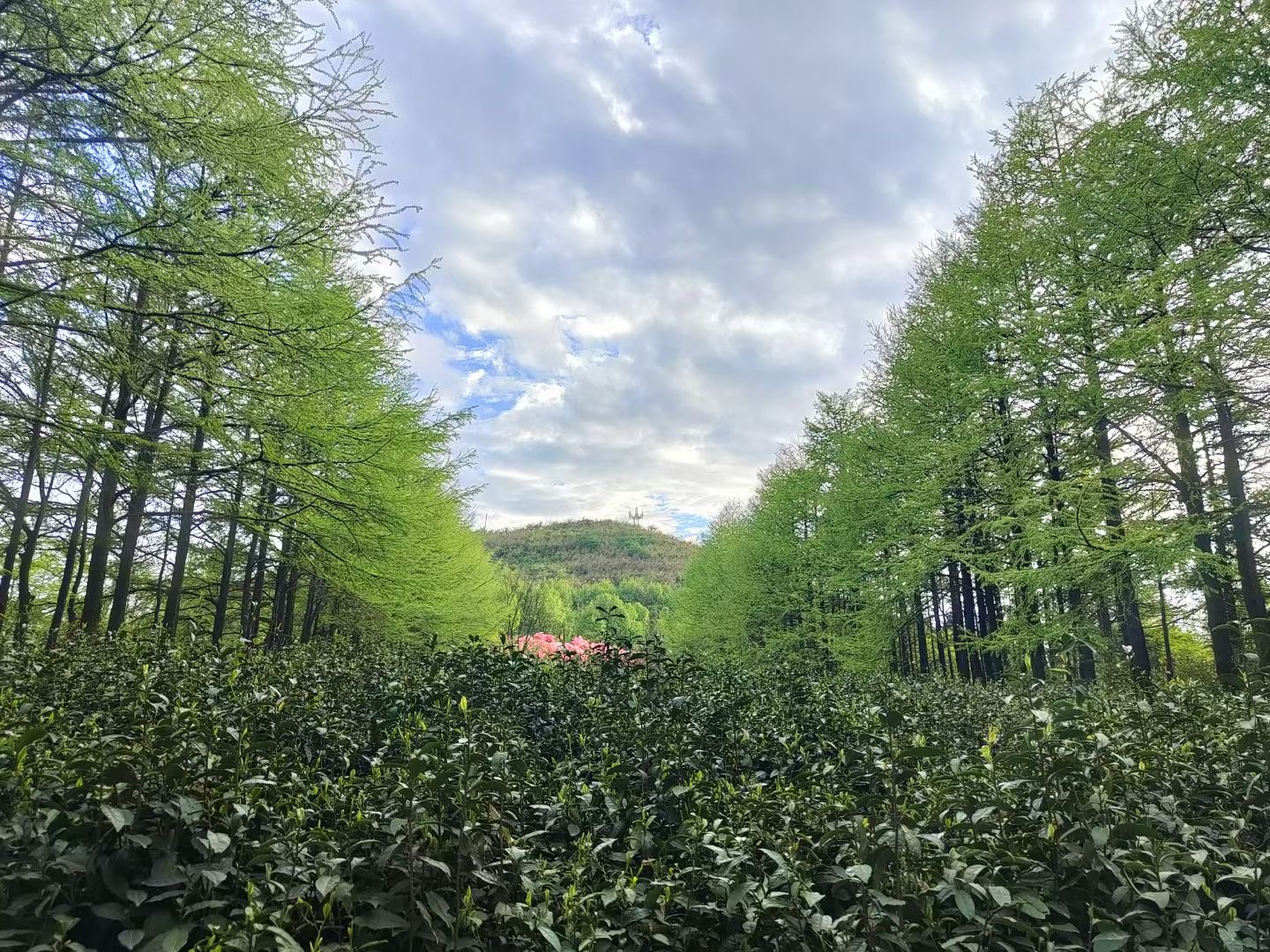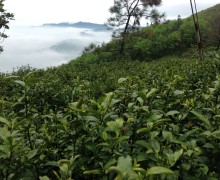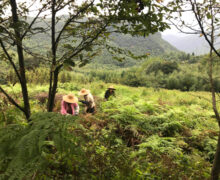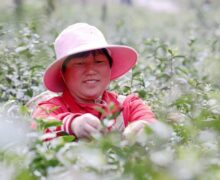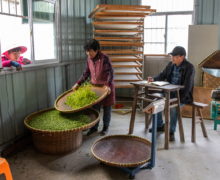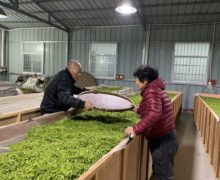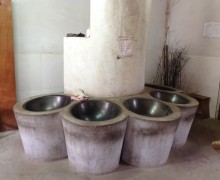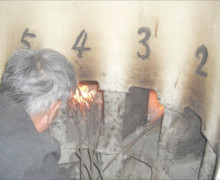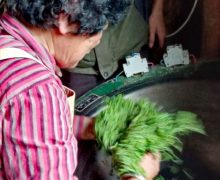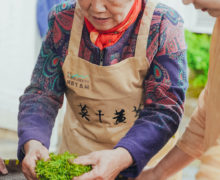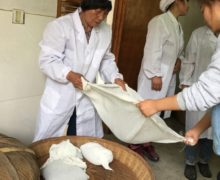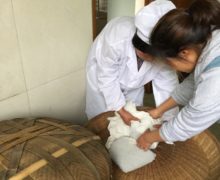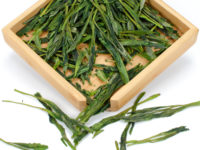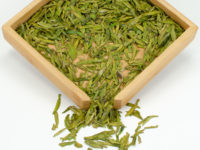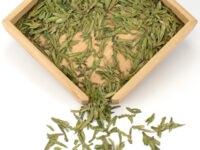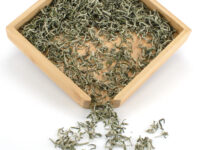Mogan Huangya (Mogan Yellow Buds)
Yellow Tea 2025
A rare tea with a lingering wildflower aroma, deep flavor, and honeyed finish. One of the few teas made by a female tea master, produced with complex yellow tea processing techniques. Yellow tea has all the rich aroma and nutrition of a high end green tea, but a gentler character without the grassy edge.
2025’s harvest of Huangya is iconic Mogan with classic notes of honeycomb and layered florals. Well-balanced, neither light nor dark, with all the heft and softness of raw silk.
- Tea Origin
- Moganshan, Deqing County, Huzhou City, Zhejiang Province, China
- Tea Bush
- Mogan Quntizhong (Mogan Heirloom Tea Bush)
- Tea Maker
- Wang Xiangzhen and Zhao Xianqin
- Harvest Time
- Late April
- Plucking Standard
- One bud, two leaves
While similar to green tea, as a yellow tea, Mogan Huangya differs in that it is slightly oxidized in a process unique to the yellow tea style. This processing step is known as menhuang and involves wrapping the moist tea leaves in cloth bundles and gently roasting them over charcoal. When tea polyphenols oxidize during this slow roasting, it results in leaves with a light yellow color. White teas, like Baihao Yinzhen (Silver Needle), are also slightly oxidized; however, their natural, slow, air-drying process results in a silvery white color with a smoother, milder flavor compared to yellow tea.When steeped, Mogan Huangya’s liquor is a bright, slightly yellow color, like fresh apricots. The aroma becomes more full as the leaves absorb the moisture; creating a rich, sweet lingering aftertaste.
The yellow tea master of Moganshan
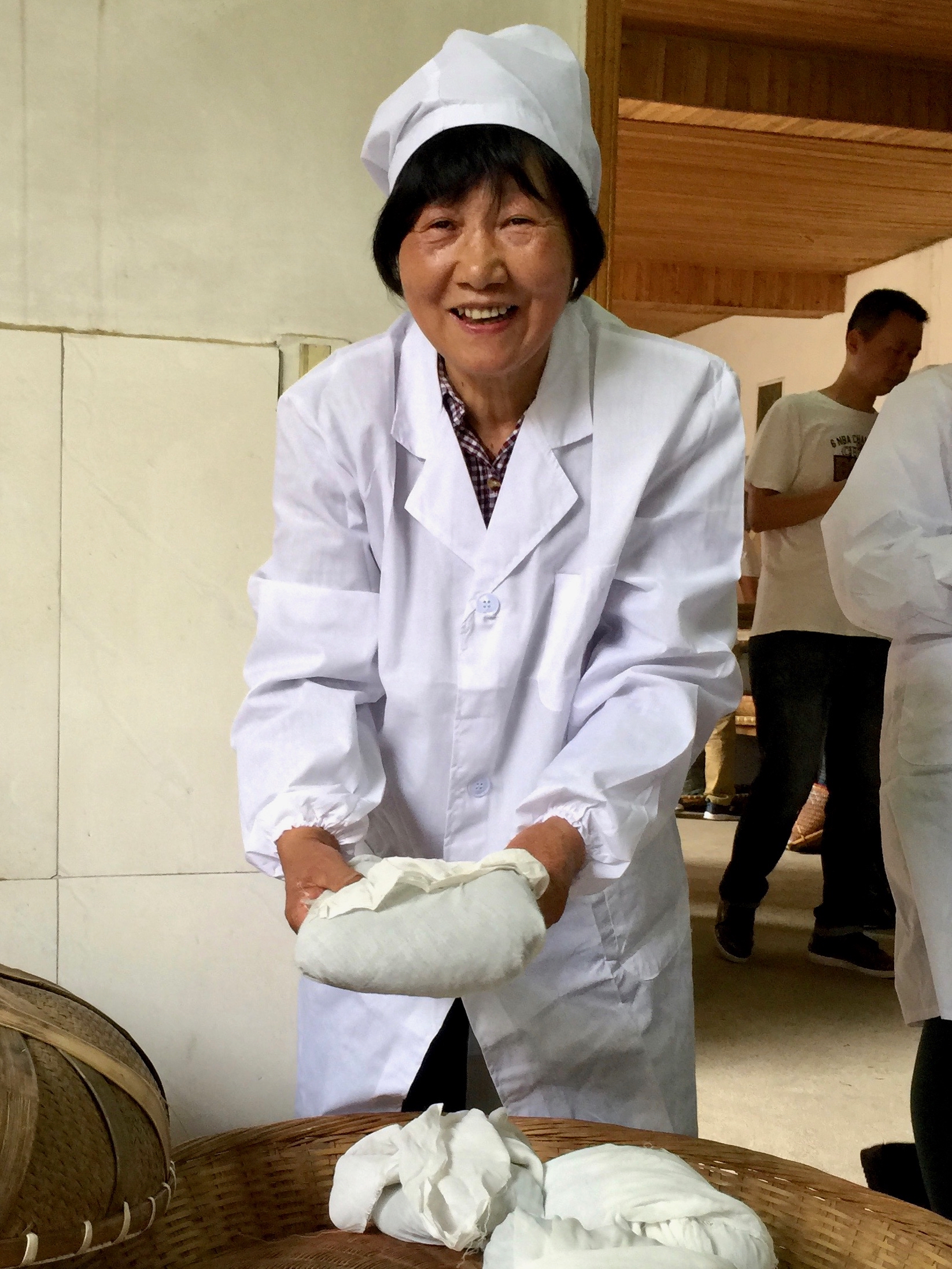
Knowledge of the techniques needed to make yellow tea is very rare today. Due to its complex process and niche market, yellow teas lost popularity to green teas, and nearly losing Mogan Huangya’s distinct techniques. However, Starting around 2010, yellow tea began regaining attention and growing in popularity. Tea master Mrs. Wang Xiangzhen has been given the prestigious honor of Master of Intangible Cultural Heritage by the state for her expertise in making Mogan Huangya. She was taught to make yellow tea by her parents, and she is now teaching her daughter and granddaughter these rare skills as well. To add to this family’s rare traits, a lineage of three generations of women tea makers is even rarer, as the tea-making industry is especially male dominated.
Although the family usually only produces green tea, they will make yellow tea by request for people who truly appreciate its special qualities. We are honored to sell their precious Mogan Huangya yellow tea to us.
Making Mogan yellow tea
Leaves for Mogan Huangya are picked a little later than most spring teas — usually around April 20th- due to its high elevation, above 700 meters (2,296 feet). Only the finest young shoots, one bud with two leaves, are plucked. Following the harvest, the fresh tea leaves are withered for two or three hours depending on the moisture content. Once they have lost some of their moisture, they become flexible, rather than crisp, and they can be fried without breaking the leaf.
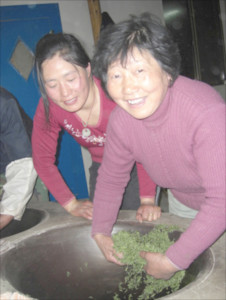
It takes a team of four people to hand fry Mogan Huangya in a very hot wok. The diameter of the wok is about two feet and it’s about one foot deep, and is heated using a traditional wood fire. The temperature of the wok is about 300°C (572°F). Due to the intense heat, each worker is only able to work the tea leaves in the wok for a few seconds at a time before the next team member takes their turn. The frying takes under 2 minutes.
After frying, the leaves are moved to a bamboo tray where the tea maker will gently knead them. It takes a delicate hand to roll the hot, pliable leaves to shape them. The motion also results in a slight amount of tea polyphenols released, which reduces astringent sensations in the finished tea.
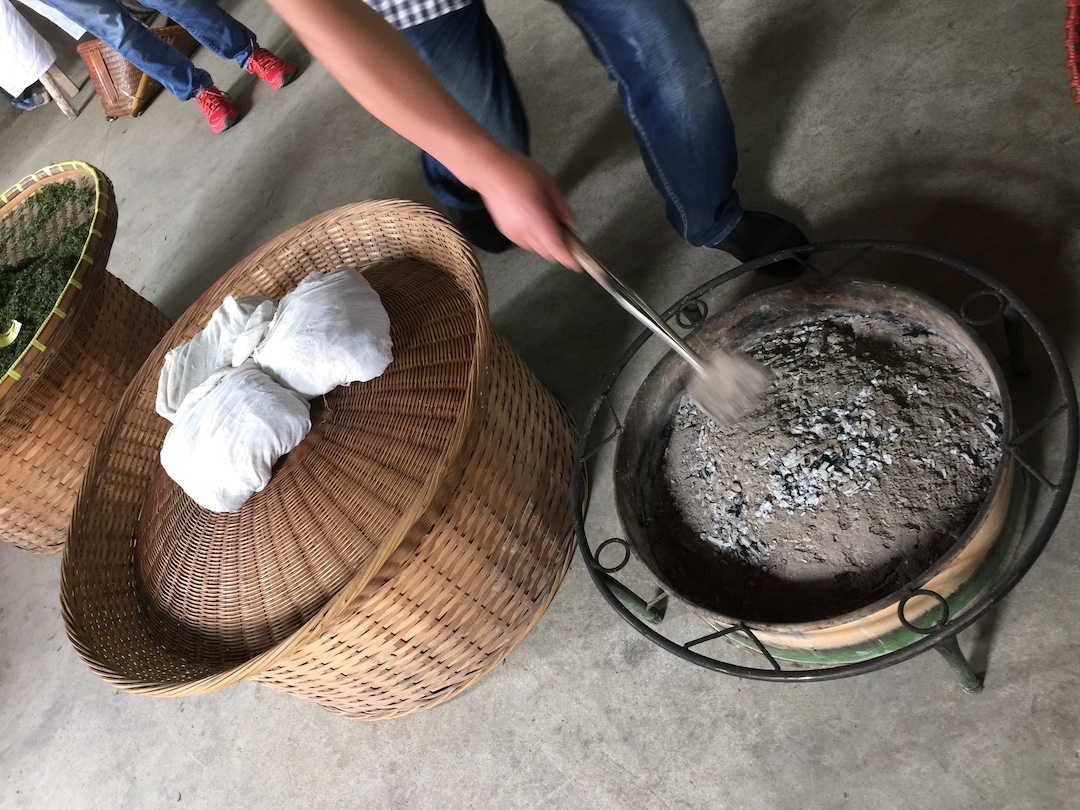
Next comes the unique menhuang step that defines a yellow tea. This very delicate step is what causes yellow tea’s mild oxidation. They will wrap the still-moist tea leaves in a light cloth and place them on a cylindrical, bamboo drum, which is about one and a half feet tall. The bamboo drum is placed over charcoal to gently roast the tea. Every half hour the tea master unwraps the bundles of leaves to check their progress and shake and mix them for even oxidation. Then, re-wraps them and places them back over the charcoal. This slow roasting process lasts for a total of around ten hours. Once it is complete, the leaves are dried in a small oven to stop the oxidization process and bring the moisture content to less than 5% to be shelf stable.Yellow tea’s process is long and laborious, and it takes great care to complete properly.
The Moganshan Tea Gardens
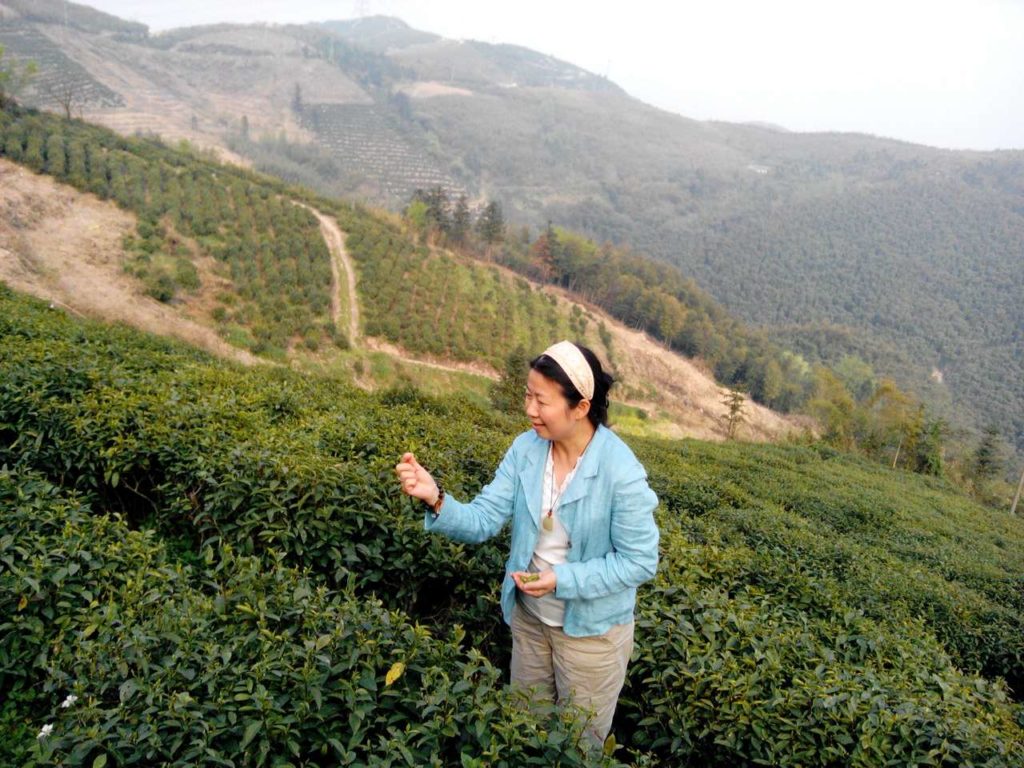
The weather and climate in this area is especially good for tea cultivation. The average temperature during late April is 15°C (59°F) with humidity hovering steadily around 80%. The tea bushes easily take to growing in the shade of clouds at the top of Mogan Mountain, surrounded by bamboo, mist, and mountain springs. The air is cool, crisp, and clean; and the serene quiet of the area inspires a calm in visitors. When you walk among the tea fields of Moganshan, you can see far into the distance and into the valley below. Because of its high altitude, tea grown here usually grows slower and needs to be harvested about a week later than in other areas.
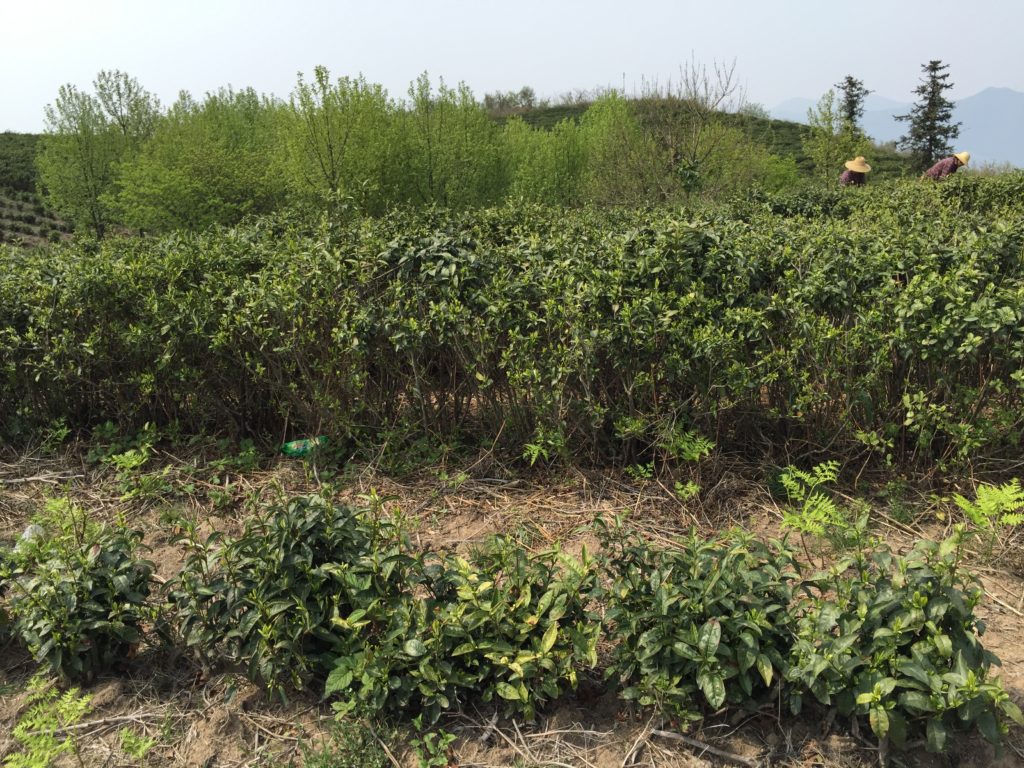
This Mogan Huangya tea garden has seed-grown bushes, not cuttings, that descend from the Jiu Keng variety and Mogan’s local heirloom tea bushes. The old tea bushes growing here have strong, deep root systems. The bushes are irrigated with spring water and are fertilized with natural fertilizers such as cut grass, weeds, and fermented rapeseed paste (a byproduct of canola oil) to preserve the pristine environment.
Origins in the Green Tea Capital: Hangzhou
Moganshan has long been praised for its green tea, producing far more green tea than yellow. This particular location was even mentioned in Lu Yu’s Cha Jing, the first book on tea ever written over 1,200 years ago. This entire region of Zhejiang Province has a very long history of producing excellent green teas, including Longjing (Dragon Well), the most famous green tea in China. The Hangzhou origin which produces our Shifeng Longjing is only about a two hour drive from Moganshan.
Mythology of Moganshan
Most Chinese know of Moganshan, but not because of its tea. In the stories of ancient China, there were ten legendary swords; one of which was named Mogan Jian (The Swords of Mogan). As the story goes, Mogan Jian was actually a set of swords, called male and female swords — Zi Xiong Jian. In the Chun Qiu Dynasty, Helu, a king in Eastern China (in the Wu Kingdom) ordered Gan Jiang and Mo Ye (famous sword smiths in this region, a husband and wife team) to make him the best pair of swords they could make in three months. This was a difficult order to complete because it takes a long time to make a good sword. Mo Ye, wanting to fulfill this order to ensure her husband’s life, prayed to the gods to spare her husband and help him appease the king. She decided to sacrifice her life to the gods in exchange for her husband’s, so she threw herself into the furnace. Her husband completed his task for the king, and the swords he made became famous because of his wife’s sacrifice. So Mogan Shan (taking its name from the surnames of the sword smiths) is known in China for these two great swords and for the husband and wife’s great love.
No chemical fertilizer, pesticide, or herbicide was used in the production of this tea. Click here to read more about our promise to fair trade and the environment.

